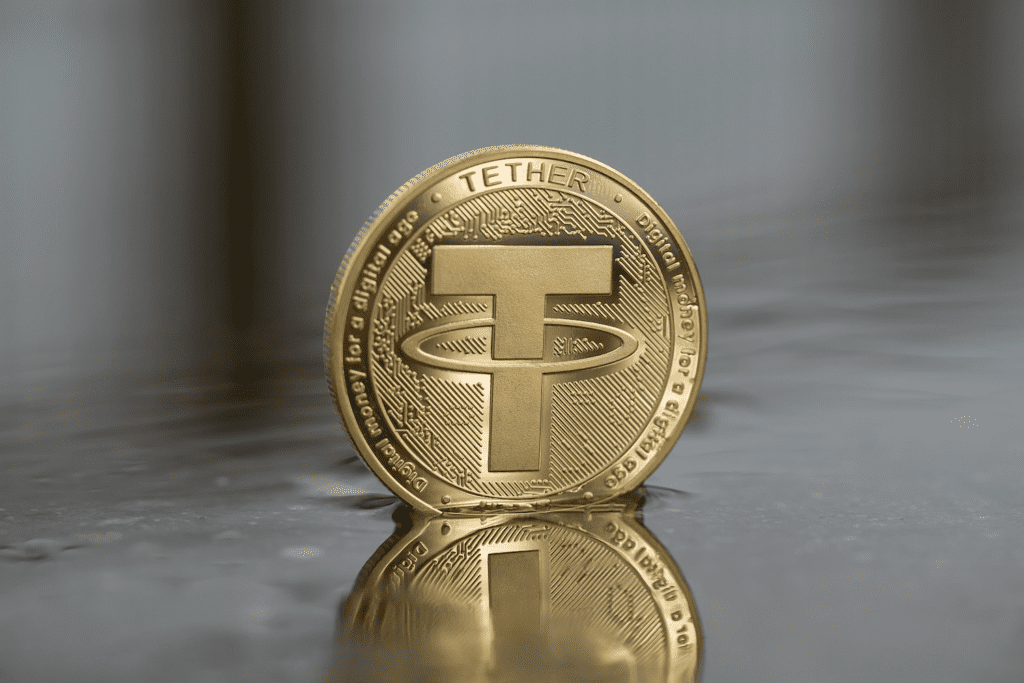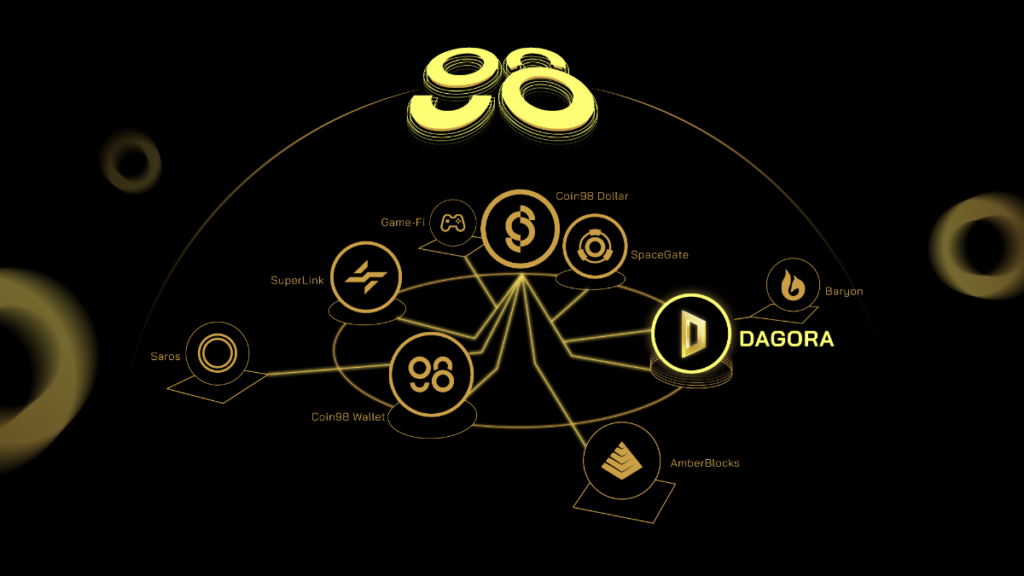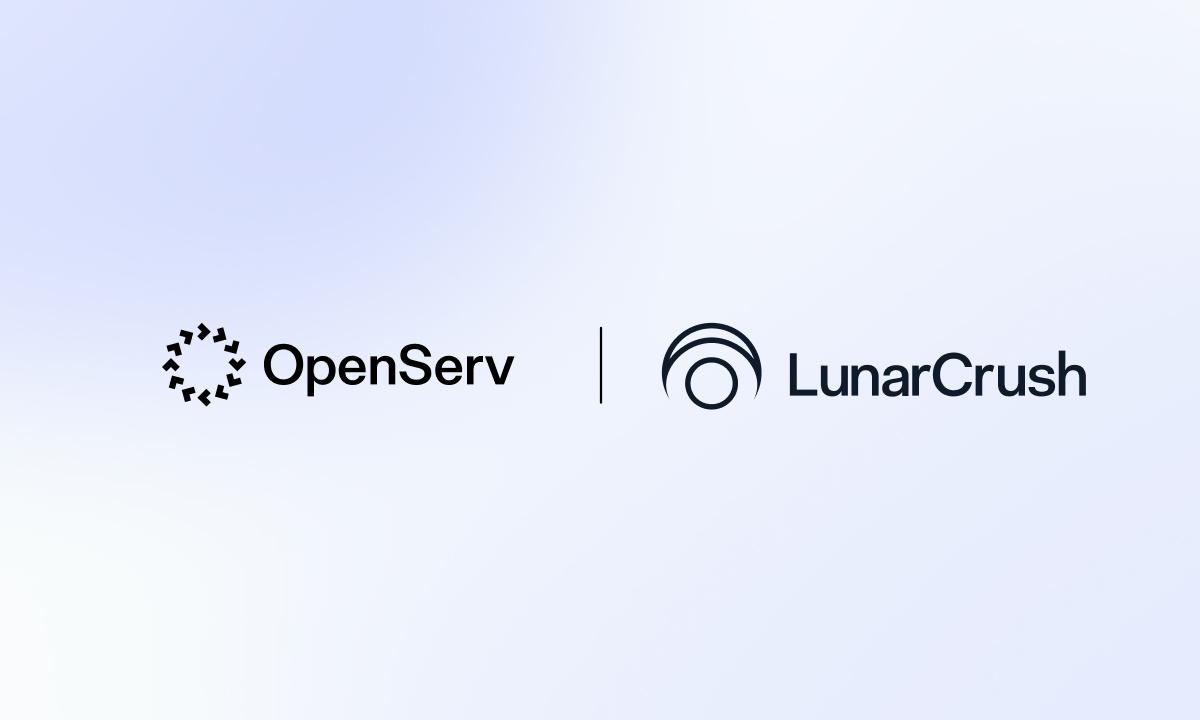The most prevalent trait of blockchain networks in their early phases is closure. This indicates that there is no intercommunication across blockchain networks. Users have difficulties while moving assets across networks as a result of this. As technology advances steadily, multi-chain technologies are emerging in the realm of cryptocurrencies. Next, let’s join Coincu to find out the best multi-chain crypto projects in 2024.

What are Multi-Chain Crypto Projects?
In the ever-evolving world of blockchain technology, the term “multi-chain” has taken center stage, defining a new ecosystem where hundreds of blockchains coexist and cooperate seamlessly.
Multi-chain projects, in particular, have emerged as game-changers in the field, allowing for the simultaneous deployment of smart contracts across multiple blockchains, thus creating a connected network of isolated chains.
At its core, multi-chain technology revolves around the concept of interoperability. These projects enable apps and protocols to bridge the gap between multiple blockchains, making them compatible with data from various chains.
Multichain equips developers with user-friendly and flexible tools while supporting a wide range of programming languages. This adaptability is crucial in ensuring a smooth transition for developers looking to explore the multi-chain environment. Moreover, within the multichain network, assets known as native tokens can be effortlessly created and exchanged between users.
The essence of multi-chain crypto projects lies in their ability to connect isolated chains into a unified network. This concept marks a significant departure from traditional blockchains like Bitcoin or Ethereum, which operate as standalone entities. With multi-chain, the focus shifts to creating a dynamic ecosystem where multiple chains collaborate harmoniously, enabling users to transact seamlessly across various chains without the need to shuttle assets from one place to another.
Read More: Top 5 Best Metaverse Coins To Invest In 2024
Top Multi-Chain Crypto Projects
Let’s delve into the specifics of each project to gain a deeper understanding of the top multi-chain crypto projects
1. Tether
Overview
Tether (Tether Limited), a pioneering platform enabling the use of fiat currencies on various blockchains by issuing Tether coins or tokens with an equivalent value, has made significant strides in its expansion efforts. As of July 2022, Tether has successfully minted its USDT stablecoin on ten different protocols and blockchains, cementing its position as a leading player in the world of stablecoins.
Originally conceived as a cryptocurrency designed to maintain a value equivalent to $1 USD, Tether has firmly established itself as a trusted stablecoin within the cryptocurrency ecosystem. The stablecoin’s primary purpose is to provide a secure and reliable means for users to transact and store value while avoiding the price volatility often associated with cryptocurrencies like Bitcoin and Ethereum.
One of Tether’s fundamental claims is that for every USDT token issued, they maintain a reserve of $1 in assets. This commitment to maintaining a 1:1 ratio between the tokens and actual assets in reserve is crucial for ensuring stability and trust in the digital currency. However, Tether Limited has faced regulatory challenges and scrutiny over its ability to back its USDT stablecoin with sufficient assets.
Tether’s journey, which began as an innovative concept to facilitate fiat currency usage on blockchains, has evolved into a complex and closely watched enterprise. The expansion of its USDT stablecoin across multiple blockchain networks has underscored the growing demand for stable digital assets in an increasingly volatile cryptocurrency market. Therefore, Tether is one of the industry’s prominent multi-chain crypto projects.

Features
Tether, at present, stands as the largest stablecoin, with a firm grip on approximately 53% of the total stablecoin market capitalization. It’s closely followed by USD Coin (USDC), the second-largest stablecoin, accounting for roughly 31% of the market, and Binance USD (BUSD) in the third position.
One of the primary use cases for stablecoins, like Tether, is to provide crypto traders with a means of steady and reliable liquidity when navigating the volatile cryptocurrency market. These digital assets enable traders to enter and exit positions without the anxiety of unpredictable losses stemming from rapid price fluctuations, thereby reducing market risk.
Tether doesn’t stop at its flagship USDT token; it has expanded its offerings to cater to a broader range of assets, each pegged to different underlying values:
- Tether Gold (AUXT): This stablecoin is tethered to the price of gold, appealing to those who seek to transact in a cryptocurrency backed by the enduring value of the precious metal.
- Tether Euro (EURT): With a peg to the euro, this stablecoin provides a secure and familiar alternative for users who prefer the stability of the European currency.
- Tether GBP (GBPT): Pegged to the U.K. pound, this stablecoin addresses the needs of cryptocurrency enthusiasts in the United Kingdom and beyond, seeking a stable digital representation of the pound.
- Tether Yuan (CNHT): For those interested in the Chinese yuan, this stablecoin maintains a peg to the currency of one of the world’s largest economies, facilitating global transactions with ease.
Conclusion
USDT has solidified its status as the reigning champion of the stablecoin world, commanding a staggering 80% of the stablecoin market capitalization. The digital currency’s primary purpose is to provide cryptocurrency traders with a stable and reliable medium for transferring assets between different digital currencies or transitioning their investments into and out of fiat currencies.
With its widespread acceptance and implementation of multi-chain solutions, Tether has emerged as the go-to choice for a multitude of investors. The stability and versatility it offers have made it an essential tool for crypto traders and investors navigating the volatile seas of the digital currency market.
One of the key factors contributing to Tether’s dominance is its extensive presence across various blockchain ecosystems. As of now, USDT is available on more than 20 different blockchain networks, including Ethereum, Binance Smart Chain, Solana, Algorand, Fantom, and Polygon, among others. This broad compatibility ensures that users can access USDT on their preferred blockchain, enhancing its convenience and utility.
Moreover, Tether’s commitment to supporting and nurturing innovation within the blockchain space has cemented its reputation as a valuable contributor to the crypto ecosystem. As a digital token built on multiple blockchains, Tether not only offers stability but also empowers emerging ventures and innovation in the ever-evolving world of blockchain technology.
2. Aave
Overview
In the rapidly evolving world of decentralized finance (DeFi), Aave has emerged as a prominent player, garnering both praise and scrutiny for its unique features and operations. Aave is one of the multi-chain crypto projects bringing DeFi breakthroughs to users.
At the heart of Aave’s appeal is its ability to offer stability in an otherwise volatile DeFi world. The platform employs stable interest rates, ensuring that users can predict their borrowing and lending costs with a degree of certainty. This predictability is a significant draw for both individual and institutional investors, as it minimizes the financial risks associated with fluctuating interest rates.
Originally conceived and built on the Ethereum blockchain, Aave has undergone a significant transformation, expanding its presence to several other blockchains. This multichain approach has allowed Aave to diversify its offerings and tap into the capabilities of various blockchain ecosystems, providing users with enhanced accessibility and flexibility.

Features
Lending and Borrowing
One of Aave’s core features is its lending and borrowing mechanism. Users can deposit supported crypto assets into the liquidity pool and, in return, receive aTokens representing the corresponding value of their assets. These aTokens also come with a profit margin that varies depending on the length of the lending period and market conditions. This innovative approach ensures that users are not only able to lend or borrow assets but also earn interest on their holdings. To prevent liquidity issues, Aave has established liquidity pools on platforms like Balancer and Uniswap, enabling lenders to withdraw their funds at any time.
Collateralized Loans
Aave’s lending model operates on overcollateralized loans, mandating that users provide assets equal to or exceeding the loan amount by 50-75%. This safety measure ensures that in the event a borrower is unable to repay their loan, the protocol’s funds remain secure. Maintaining the collateral ratio is imperative for borrowers to prevent automatic liquidation or asset sales to settle the loan.
Flash Loans
A standout feature that sets Aave apart is its innovative flash loan mechanism. Unlike traditional loans, flash loans do not require collateral. Instead, borrowers can instantly access funds on the condition that they repay the principal amount in a single transaction. If the loan isn’t repaid promptly, the transaction is reversed to safeguard the reserve pool. Flash loans incur a 0.09% fee and are typically executed in as little as 13 seconds.
These loans are designed primarily for developers, offering opportunities to build arbitrage, refinancing, or liquidation facilities. For instance, a user facing liquidation on another platform can utilize a flash loan to settle their debt, recover their collateral, and avoid the liquidation process, all without the need for additional capital injection.
Rate Switching
Aave offers borrowers the unique flexibility to switch between fixed and variable interest rates. This feature is especially useful in the DeFi space where interest rates can be highly volatile. Users can lock in future borrowing costs by switching to a fixed rate when they anticipate rate increases or return to a variable rate to reduce borrowing costs when they foresee rate decreases.
Credit Delegation
Credit Delegation is a mechanism enabling users to earn additional profits by delegating credit lines to trusted borrowers. This innovative approach allows users to lend their assets without going through the borrowing process themselves. Those receiving a line of credit can withdraw assets and utilize them. Agreements on loan terms are signed using the OpenLaw application to ensure the safety of funds. Credit Delegation serves as a bridge for users, organizations, and exchanges to access DeFi liquidity, offering an additional yield to authorizers beyond regular lending returns.
Cross-Chain Portal
Aave V3 introduces the Cross-Chain Portal, a revolutionary mechanism that allows assets to move seamlessly between different blockchains and markets. Collaborating with cross-chain bridges such as Connext and Hop Protocol, Aave facilitates the transfer of assets across diverse markets. Users can borrow or lend assets on one blockchain and seamlessly receive corresponding assets on another, enhancing the accessibility and versatility of Aave’s services.
3. Curve Finance
Overview
Curve Finance, a decentralized exchange protocol, is making waves in the world of cryptocurrency by providing a specialized platform for the seamless trading of stablecoins and crypto assets pegged at a 1:1 ratio of equal value. This development is set to revolutionize how users trade digital assets, offering low slippage, minimal fees, and additional benefits for Liquidity Providers (LPs).
Unlike Uniswap and other decentralized exchanges, Curve Finance has gained prominence for its unique approach to stablecoin trading. Users on the platform can trade stablecoins with remarkably low slippage, ensuring that they get the best value for their transactions. This feature sets Curve apart from traditional platforms, where large orders can lead to significant price fluctuations. Curve Finance is one of the multi-chain crypto projects that favors stable assets.

Features
Curve Finance’s valuation formula allows assets to be traded within a close range, resulting in significantly reduced slippage, a persistent concern for traders in DeFi platforms.
Notably, Curve Finance’s formula excels when assets are at the same price point, ensuring seamless and efficient swaps. This feature sets Curve Finance apart from other DeFi platforms, which often struggle to achieve low slippage.
In addition to its unique approach to minimizing price slippage, Curve Finance offers several other noteworthy features that have contributed to its growing popularity:
- Low Transaction Fees: Curve Finance stands out by offering stablecoin-related transactions at considerably lower fees than other prominent DeFi protocols. While Uniswap, a major competitor, charges a transaction fee of 0.3% per trade, Curve Finance offers a significantly more cost-effective option, with fees as low as 0.04%.
- No Impermanent Loss: Liquidity providers on Curve Finance offer stablecoin pairs that effectively eliminate impermanent losses, a concern that plagues many DeFi platforms. This feature provides a sense of security for liquidity providers, ensuring that their investments remain stable and free from sudden fluctuations in value.
Metapool
Metapool, a novel feature, is revolutionizing the DeFi landscape by enabling projects to establish a liquidity pool between a new asset class and stablecoins, drawn from the 3Pool (including USDT, USDC, and DAI). This innovation leverages the substantial liquidity readily available on Curve Finance, offering a host of benefits to both developers and users.
Curve Wars
Curve Wars has injected a new layer of excitement and competition into the DeFi sector. This rivalry not only drives engagement and participation within the Curve Finance ecosystem but also incentivizes innovation and value creation. As protocols vie for a share of the liquidity pie, users, liquidity providers, and the DeFi community at large stand to gain from enhanced rewards and opportunities.
4. Sushi
Overview
Sushi, a DEX operating on the Ethereum blockchain, has been making waves in the world of cryptocurrency trading. It offers users the ability to seamlessly swap one cryptocurrency for another, all while championing decentralization.
At the core of Sushi’s appeal is its commitment to decentralization. Unlike traditional exchanges, no single entity wields control over the platform. Instead, the protocol is governed and operated by smart contracts, making it truly decentralized. This ensures that users have full control over their assets and transactions, a fundamental principle of the blockchain space.
Sushi’s roots trace back to Uniswap V2, a renowned Automated Market Maker (AMM) DEX on Ethereum. Sushi is, in essence, a fork of Uniswap V2, inheriting the robust AMM framework that allows for efficient and automated trading of cryptocurrencies.
However, Sushi is not merely a replica of Uniswap. It distinguishes itself with additional features and innovations that set it apart in the world of DeFi. Sushi can be said to be one of the potential projects in the list of multi-chain crypto projects that you should choose.

Features
The Core Products
- Swap: SushiSwap’s primary function is to enable users to seamlessly swap one cryptocurrency for another. It operates as an Automated Market Maker (AMM), allowing for efficient and decentralized trading.
- Pool: Pooling is at the heart of Sushi’s liquidity mechanism, where users can provide liquidity to various trading pairs, earning fees and incentives in return.
- Lending: Sushi’s lending feature empowers users to borrow and lend assets, fostering a thriving ecosystem for yield farming and interest generation.
The Unique Innovations
- BentoBox: This smart contract serves as the central vault for the entire Sushi ecosystem. BentoBox forms the foundation for future financial instruments that Sushi envisions developing. Its versatility and integration capabilities make it a pivotal component in expanding the Sushi ecosystem.
- Trident: Launched in July 2021, Trident is a homegrown AMM that showcases compatibility with BentoBox. It places a paramount emphasis on optimizing capital efficiency, bringing together the most commendable features of various AMMs under a single roof. This consolidation of features positions Trident as a standout choice for traders and liquidity providers.
- Onsen: Onsen is the branch dedicated to providing liquidity for Sushi. By participating in Onsen pools, users contribute to the overall liquidity and health of the Sushi ecosystem, earning rewards and fees in the process.
- Mirin: Mirin acts as a bridge, allowing Sushi to tap into the liquidity offered by centralized exchanges (CEX). This feature enables seamless connections with CEX platforms, further enhancing liquidity and accessibility.
5. Coin98
Overview
Coin98 is a DeFi ecosystem that breaks down the barriers of entry and simplifies the intricate world of decentralized finance. It achieves this goal through an impressive suite of products that encompass trading, storage, asset management, lending, and savings. With these tools at users’ fingertips, Coin98 facilitates borrowing, lending, token swapping, and yield farming, making it possible for everyone to participate in the DeFi landscape.
One of the standout features of the Coin98 cryptocurrency ecosystem is its versatility. Within its robust framework, users can explore a plethora of features and services. Notable among these is Coin98 staking, a mechanism that allows users to earn rewards by locking their assets within the ecosystem. Coin98 is one of the multi-chain crypto projects that provides the best user experience.

Features
Coin98 Super App
Coin98 Super App is a crypto super application that serves as the central hub for accessing DeFi with ease. It integrates a variety of essential products, including a Storage Wallet, Coin98 Exchange, Cross-chain Bridge (Space Gate), Web3 dApp browser, and Terminal toolkit.
Coin98 Exchange
Coin98 Exchange, a cross-chain DEX Aggregator, empowers users to trade various crypto assets seamlessly. The exchange has successfully connected 14 liquidity sources across eight different blockchains, ensuring liquidity and a diverse range of trading options.
Coin98 Portfolio
Managing assets across multiple blockchains is simplified through Coin98 Portfolio. Users can effortlessly track and manage their holdings without the need to import complex key or passphrase information. Currently, Coin98 Portfolio supports tracking on 11 different blockchains, including Solana, Ethereum, BNB Chain, HECO, Avalanche C-Chain, Tron, TomoChain, Near, Polkadot, Kusama, and Celo.
Coin98 Market
Coin98 Market provides users with real-time, comprehensive market data about various coins and tokens. It facilitates tracking exchange rates, market changes, and fluctuations, covering over 9,000 types of tokens and coins on 635+ different exchanges.
Coin98 Terminal
The Coin98 Terminal is a valuable DeFi toolkit within the Coin98 Super App. It includes essential tools like Token Issuer and NFT Issuer, enhancing the user experience by offering a more comprehensive and efficient way to navigate the platform without leaving the app.
Coin98 Dollar (CUSD)
CUSD is a decentralized and fully-backed stablecoin within the Coin98 ecosystem. It maintains a 1:1 ratio backed by BUSD and USDC, aiming to meet liquidity needs in DeFi and enable cross-chain cash flow circulation. This innovation positions CUSD at the forefront of the emerging multichain trend.
Coin98 Earn
Coin98 Earn is a feature-packed section of the Coin98 Super App, comprising a collection of financial products developed by Coin98. It provides users with opportunities to increase their cryptocurrency holdings, serving as a secure platform for storing, saving, and growing asset value.
Read More: Top 10 Best Solana DEX Ranking in 2024
Multichain vs. Crosschain
Multi-Chain Technology
Multi-chain technology is a solution designed to deploy a project across multiple blockchain networks. The primary aim is to facilitate communication and data exchange between these interconnected networks. Projects employing multi-chain technology typically operate simultaneously on at least two different blockchains. This approach fosters a collaborative environment, enabling these chains to interact and, in turn, strengthening the notion of decentralization.
Commonly, multi-chain projects span across blockchain networks such as Binance Smart Chain, Ethereum, and Polkadot. The advantage of this approach is the ability for various chains to communicate with one another efficiently, creating a network of interconnected blockchains.
Cross-Chain Technology
On the other hand, cross-chain technology is a distinct tool that enables the seamless flow of assets between unrelated blockchain platforms. This innovative solution leverages smart contracts to facilitate network interaction. Often likened to a ‘blockchain bridge’ by Ledger.com, cross-chain technology breaks down the barriers that exist between diverse blockchains, ensuring assets can move freely between them.
One key differentiator between cross-chain and multi-chain technology is their technical implementation. Multi-chain crypto projects usually rely on separate and isolated smart contracts within each blockchain they operate on. In contrast, cross-chain projects utilize a unified set of smart contracts that effortlessly communicate across multiple chains. This approach unlocks a best-of-both-worlds strategy, as applications can access a secure cross-chain messaging protocol.
Cross-Chain Projects: Fostering Modularity
Cross-chain projects introduce a high degree of modularity to application design. Instead of replicating smart contracts for each blockchain, developers can allocate different aspects of their application to the chains best suited for their respective purposes. For example, a Web3 game can process game transactions on a high-throughput, cost-effective chain while simultaneously minting NFTs for players on a chain optimized for security. DeFi protocols can enhance liquidity by allowing users to access them across various blockchain networks.
With cross-chain projects, users are freed from the concern of which blockchain they are operating on. Their focus shifts solely to navigating the application, marking a significant step toward the original vision of multi-chain technology. While these two concepts differ today in terms of their technical implementations, it’s conceivable that they may become synonymous in the future as the blockchain space continues to evolve.
Conclusion
In conclusion, multi-chain crypto projects like Tether, Aave, Curve Finance, Sushi, and Coin98 are changing the landscape of the cryptocurrency world. These projects enable seamless transactions across various blockchains, offering users increased flexibility and efficiency. As technology continues to evolve, multi-chain technologies are anticipated to continue to drive innovation in cryptocurrencies, promoting interoperability and fostering a more connected and dynamic ecosystem.
DISCLAIMER: The information on this website is provided as general market commentary and does not constitute investment advice. We encourage you to do your own research before investing.
















